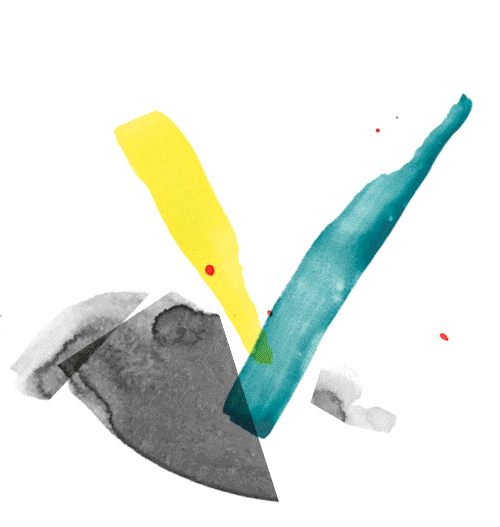

Sign up for our newsletters. You can change the settings or unsubscribe at any time.
Thank you for your subscription. We have sent you an e-mail with a confirmation link.


exp. 1
exp. 2
exp. 3

Museu de Arte Osório Cesar, Franco da Rocha, BR
Venue: Gropius Bau
Museu de Arte Osório Cesar, Franco da Rocha, BR
Founded 1985 in Franco da Rocha, BR
With works by Aurora Cursino dos Santos, Maria Aparecida Dias,
Ubirajara Ferreira Braga, Masayo Seta
The understanding and acknowledgement of artistic work by patients from psychiatric hospitals has a very singular history in Brazil, and Dr. Osório Cesar (1895–1979), together with the better known Dr. Nise da Silveira (1905–1999), is a fundamental influence. César, a reader of Hans Prinzhorn’s writings, led the national reform of the asylum system from his position at the Hospital Franco da Rocha, in Juquery, near São Paulo. In 1933, he partnered with artist Flávio de Carvalho to organize “The Month of the Children and the Mentally Ill” at the Clube dos Artistas Modernos (Club of Modern Artists, or CAM). In the midst of a growing modern movement, Carvalho and Cesar shared an interest in exhibiting the creativity of patients in psychiatric institutions, which they understood to be connected to a natural aptitude, unaffected by the artifice promoted by art academies. They identified in these works a “virgin” imaginary (a term introduced by art critic Mário Pedrosa), untouched by academic dogmas.
Even though Cesar’s therapeutic method made use of drawing, painting, and sculpture, he defended the resulting works’ artistry, their “creative exuberance,” and saw in them a “freedom” that made them equal in artistic value to the work of modernist artists. This set Cesar apart from the majority of his colleagues, who interpreted their patients’ artworks on the basis of their medical history or clinical biography; he believed those works should leave the hospital and enter the museum. In response, this selection of works from the Museu de Arte Osório Cesar, which was founded in 1985, are exhibited as artworks that deal with issues pertinent to us today, such as the perception of time and the act of waiting in confinement, the deconstruction of the figure of the religious leader, the subaltern position of Indigenous peoples, and the subsumption of children under the adult world. These artists, still considered by many as “outsiders,” show the relation between the concept of madness and the sickness of modernity, both the result of its normativity and its desire for control.
Lisette Lagnado
Solidarity and Storytelling. Rumors against Enclosure
María Berríos
Essay
#fight4rojava
Graffiti
Undocumented Rumours and Disappearing Acts from Chile
María Berríos
Essay
New Look
Flávio de Carvalho
Performance
A World Without Bones
Agustín Pérez Rubio
Memorial to the Sinti and Roma Victims of National Socialism
Dani Karavan
Memorial
By using this website you agree to the use of cookies in accordance with our data privacy policy.

Museu de Arte Osório Cesar, Franco da Rocha, BR
Venue: Gropius Bau
Museu de Arte Osório Cesar, Franco da Rocha, BR
Founded 1985 in Franco da Rocha, BR
With works by Aurora Cursino dos Santos, Maria Aparecida Dias,
Ubirajara Ferreira Braga, Masayo Seta
The understanding and acknowledgement of artistic work by patients from psychiatric hospitals has a very singular history in Brazil, and Dr. Osório Cesar (1895–1979), together with the better known Dr. Nise da Silveira (1905–1999), is a fundamental influence. César, a reader of Hans Prinzhorn’s writings, led the national reform of the asylum system from his position at the Hospital Franco da Rocha, in Juquery, near São Paulo. In 1933, he partnered with artist Flávio de Carvalho to organize “The Month of the Children and the Mentally Ill” at the Clube dos Artistas Modernos (Club of Modern Artists, or CAM). In the midst of a growing modern movement, Carvalho and Cesar shared an interest in exhibiting the creativity of patients in psychiatric institutions, which they understood to be connected to a natural aptitude, unaffected by the artifice promoted by art academies. They identified in these works a “virgin” imaginary (a term introduced by art critic Mário Pedrosa), untouched by academic dogmas.
Even though Cesar’s therapeutic method made use of drawing, painting, and sculpture, he defended the resulting works’ artistry, their “creative exuberance,” and saw in them a “freedom” that made them equal in artistic value to the work of modernist artists. This set Cesar apart from the majority of his colleagues, who interpreted their patients’ artworks on the basis of their medical history or clinical biography; he believed those works should leave the hospital and enter the museum. In response, this selection of works from the Museu de Arte Osório Cesar, which was founded in 1985, are exhibited as artworks that deal with issues pertinent to us today, such as the perception of time and the act of waiting in confinement, the deconstruction of the figure of the religious leader, the subaltern position of Indigenous peoples, and the subsumption of children under the adult world. These artists, still considered by many as “outsiders,” show the relation between the concept of madness and the sickness of modernity, both the result of its normativity and its desire for control.
Lisette Lagnado
Hatred Among Us
Lisette Lagnado
Essay
Queer Ancient Ways: A Decolonial Exploration
Zairong Xiang
Monograph
Touching Feeling. Affect, Pedagogy, Performativity
Eve Kosofsky Sedgwick
Monograph
Struggle as Culture: The Museum of Solidarity, 1971–73
María Berríos
Essay
El primer nueva corónica y buen gobierno
Felipe Guamán Poma de Ayala
Chronicle
THE MOBILIZATION
Nicolás Cuello
Text
By using this website you agree to the use of cookies in accordance with our data privacy policy.

Museu de Arte Osório Cesar, Franco da Rocha, BR
Venue: Gropius Bau
Museu de Arte Osório Cesar, Franco da Rocha, BR
Founded 1985 in Franco da Rocha, BR
With works by Aurora Cursino dos Santos, Maria Aparecida Dias,
Ubirajara Ferreira Braga, Masayo Seta
The understanding and acknowledgement of artistic work by patients from psychiatric hospitals has a very singular history in Brazil, and Dr. Osório Cesar (1895–1979), together with the better known Dr. Nise da Silveira (1905–1999), is a fundamental influence. César, a reader of Hans Prinzhorn’s writings, led the national reform of the asylum system from his position at the Hospital Franco da Rocha, in Juquery, near São Paulo. In 1933, he partnered with artist Flávio de Carvalho to organize “The Month of the Children and the Mentally Ill” at the Clube dos Artistas Modernos (Club of Modern Artists, or CAM). In the midst of a growing modern movement, Carvalho and Cesar shared an interest in exhibiting the creativity of patients in psychiatric institutions, which they understood to be connected to a natural aptitude, unaffected by the artifice promoted by art academies. They identified in these works a “virgin” imaginary (a term introduced by art critic Mário Pedrosa), untouched by academic dogmas.
Even though Cesar’s therapeutic method made use of drawing, painting, and sculpture, he defended the resulting works’ artistry, their “creative exuberance,” and saw in them a “freedom” that made them equal in artistic value to the work of modernist artists. This set Cesar apart from the majority of his colleagues, who interpreted their patients’ artworks on the basis of their medical history or clinical biography; he believed those works should leave the hospital and enter the museum. In response, this selection of works from the Museu de Arte Osório Cesar, which was founded in 1985, are exhibited as artworks that deal with issues pertinent to us today, such as the perception of time and the act of waiting in confinement, the deconstruction of the figure of the religious leader, the subaltern position of Indigenous peoples, and the subsumption of children under the adult world. These artists, still considered by many as “outsiders,” show the relation between the concept of madness and the sickness of modernity, both the result of its normativity and its desire for control.
Lisette Lagnado
A Moment of True Decolonization / Episode #6: Sinthujan Varatharajah. Constructing the Tamil Eelam State
The Funambulist / Sinthujan Varatharajah
Podcast
Glossary of Common Knowledge
L’Internationale Online
Glossary
Solidarity and Storytelling. Rumors against Enclosure
María Berríos
Essay
Invitation to the Species: Cecilia Vicuña
Tamaas / Cecilia Vicuña
Podcast
#fight4rojava
Graffiti
Fragments of the Artist’s Diary, Berlin 11.2019–1.2020
Virginia de Medeiros
Diary
By using this website you agree to the use of cookies in accordance with our data privacy policy.

Museu de Arte Osório Cesar, Franco da Rocha, BR
Venue: Gropius Bau
Museu de Arte Osório Cesar, Franco da Rocha, BR
Founded 1985 in Franco da Rocha, BR
With works by Aurora Cursino dos Santos, Maria Aparecida Dias,
Ubirajara Ferreira Braga, Masayo Seta
The understanding and acknowledgement of artistic work by patients from psychiatric hospitals has a very singular history in Brazil, and Dr. Osório Cesar (1895–1979), together with the better known Dr. Nise da Silveira (1905–1999), is a fundamental influence. César, a reader of Hans Prinzhorn’s writings, led the national reform of the asylum system from his position at the Hospital Franco da Rocha, in Juquery, near São Paulo. In 1933, he partnered with artist Flávio de Carvalho to organize “The Month of the Children and the Mentally Ill” at the Clube dos Artistas Modernos (Club of Modern Artists, or CAM). In the midst of a growing modern movement, Carvalho and Cesar shared an interest in exhibiting the creativity of patients in psychiatric institutions, which they understood to be connected to a natural aptitude, unaffected by the artifice promoted by art academies. They identified in these works a “virgin” imaginary (a term introduced by art critic Mário Pedrosa), untouched by academic dogmas.
Even though Cesar’s therapeutic method made use of drawing, painting, and sculpture, he defended the resulting works’ artistry, their “creative exuberance,” and saw in them a “freedom” that made them equal in artistic value to the work of modernist artists. This set Cesar apart from the majority of his colleagues, who interpreted their patients’ artworks on the basis of their medical history or clinical biography; he believed those works should leave the hospital and enter the museum. In response, this selection of works from the Museu de Arte Osório Cesar, which was founded in 1985, are exhibited as artworks that deal with issues pertinent to us today, such as the perception of time and the act of waiting in confinement, the deconstruction of the figure of the religious leader, the subaltern position of Indigenous peoples, and the subsumption of children under the adult world. These artists, still considered by many as “outsiders,” show the relation between the concept of madness and the sickness of modernity, both the result of its normativity and its desire for control.
Lisette Lagnado
#fight4rojava
Graffiti
III: La familia son quiénes se alegran con nuestros actos diarios. Detrás de las curadoras de la XI
María Berríos, Agustín Pérez Rubio
Conversation
I: Junto a las curadoras de la XI Berlin Biennale for Contemporary Art
Renata Cervetto, Lisette Lagnado
Conversation
St Sara Kali George
Delaine Le Bas
Soundscape
Teatro da Vertigem
Monograph
II: La Solidaridad va Más Allá de un Concepto. Entre las Curadoras de la XI Berlin Biennale
Lisette Lagnado, Agustín Pérez Rubio
Conversation
By using this website you agree to the use of cookies in accordance with our data privacy policy.
By using this website you agree to the use of cookies in accordance with our data privacy policy.




